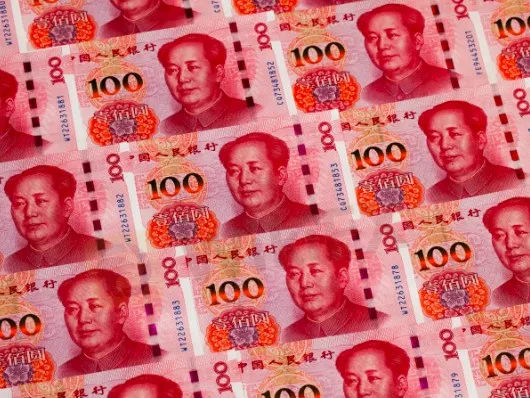简体中文
繁體中文
English
Pусский
日本語
ภาษาไทย
Tiếng Việt
Bahasa Indonesia
Español
हिन्दी
Filippiiniläinen
Français
Deutsch
Português
Türkçe
한국어
العربية
China’s yuan softens as dollar rises to two-year highs
Abstract:SHANGHAI: China’s yuan weakened on Tuesday as expectations of steep rate rises by the US Federal Reserve lifted the dollar, but moderating expectations for aggressive loosening by China’s central bank kept losses in check.
“Were still digesting expectations for further rate hikes by the Fed. The situation for the yuan will only improve when these expectations ease. The dollar still has room to strengthen,” said a trader at a foreign bank.

The US dollar index, which measures the greenback against a basket of its peers, touched new two-year highs on Tuesday, and was last at 100.935, as benchmark US Treasury yields hovered near their highest since late 2018
Despite the dollar‘s strength, the People’s Bank of China set the yuans daily midpoint rate slightly firmer at 6.372 per dollar before the market opened, from 6.3763 on Monday.
Spot yuan opened at 6.3700 per dollar and was changing hands at 6.3719 at midday, 53
pips weaker than Mondays late close.
The offshore yuan softened to 6.3818 per dollar from a close of 6.3799.
Narrowing spreads between Chinese and US yields have weighed on the yuan this year as differing economic outlooks have prompted increasingly divergent monetary policy outlooks for the two countries central banks.
China‘s GDP data, PBOC’s caution over stimulus, limits yuans decline
The 10-year China-US spread is presently inverted, with the US 10-year yield 0.35 basis points higher than its Chinese equivalent.
On Monday, St. Louis Federal Reserve Bank President James Bullard said inflation is “far too high” as he called for increasing interest rates to 3.5% by the end of the year.
Meanwhile, China remains on a loosening path. To support the economy, the Peoples Bank of China (PBOC) announced on Friday a cut to the amount of cash that banks must hold as reserves.
But analysts have scaled back their forecasts for aggressive loosening by the PBOC, because the cut in the reserve requirement ratio was smaller than expected.
Analysts at Maybank said there had been signs of capital outflows in recent weeks, with foreign investors in March cutting holdings of Chinese government bonds at the fastest rate since 2015.
“Lingering growth concerns in light of COVID restrictions could continue to weigh on the yuan as well but (the) PBOCs preference for prudence, (and the) potential for USD to peak could keep the yuan relatively stable,” they said.
Disclaimer:
The views in this article only represent the author's personal views, and do not constitute investment advice on this platform. This platform does not guarantee the accuracy, completeness and timeliness of the information in the article, and will not be liable for any loss caused by the use of or reliance on the information in the article.
Read more
WikiFX Broker
Latest News
JUST Finance and UBX Launch Multi-Currency Stablecoin Exchange
XM Revamps Website with Sleek Design and App Focus
TradingView & Mexico’s Uni. Partnership, to Enhance Financial Education
Something You Need to Know About SogoTrade
Global Shift in Cryptocurrency Taxation: Italy and Denmark Chart New Paths
Webull Introduces 24/5 Overnight Trading to Extend U.S. Market Access
eToro Launches Global-Edge Smart Portfolio: A Balanced Approach to Growth and Stability
Darwinex advises traders to update MT4 & 5
Revolut X Expands Crypto Exchange Across Europe, Targeting Pro Traders
Crypto Scammer Pleads Guilty in $73 Million “Pig Butchering” Fraud
Currency Calculator






